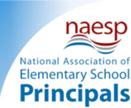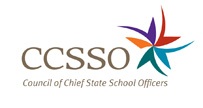What is inclusion and why is it important?
Page 3: Why Should School Environments Become Inclusive?
To better meet the diverse needs of all students, school personnel should work toward making their school more inclusive. Bringing about such changes, however, will require strong leadership. As school leaders, principals can encourage and inspire the entire school community to work in extraordinary ways, are uniquely situated to guide the process of creating an inclusive school, and are generally best able to foster the conditions necessary for this change to occur. School leaders who contemplate major school changes such as creating a more inclusive school environment often consider several imperatives: legal, professional, and moral.
| Legal Imperative | ||||||||||||||||||||
To build an inclusive school, leaders must have a thorough knowledge of legislation related to the education of children. Implicit in that legislation is the expectation that education will occur in inclusive settings. Toward that end, the law outlines what school personnel must do in regard to educating students.
Adapted from Postsecondary Education Consortium (2005). Print this section
|
||||||||||||||||||||
| Professional Imperative | ||||||||||||||||||||
| Whereas legislation outlines what school personnel must do in regard to educating students, professional standards help guide school leaders in how to effectively educate all students in an inclusive school environment. These standards, by which principals are evaluated and ultimately held accountable, support creating a school in which the needs of all students are met.
In general, professional standards are intended to guide school leaders in creating effective schools in which all students are viewed as capable of learning and are challenged. These professional standards for school leaders promote the creation of inclusive school environments. Three national organizations that support principals or provide guidance regarding such standards are highlighted in the table below.
Print this section
|
Listen as Joseph Murphy and John Nori discuss how professional standards reflect the role of the modern principal as an instructional leader rather than a manager.

Joseph Murphy, PhD
Frank W. Mayborn Chair of Education
Vanderbilt University
(time: 0:31)

John Nori
Director, Program Development
National Association of Secondary School Principals (NASSP)
(time: 0:46)
Transcript: Joseph Murphy, PhD
The historical foundations for school administration have been issues of organization management, governance, politics, finance, and related activities. What these standards basically did was reset the entire profession from its historical grounding to an emphasis on learning and teaching as the foundation. And they unequivocally shifted the field towards learning and teaching, and they ensure that all kids reach ambitious targets of performance.
Transcript: John Nori
The ISLLC document highlights six standards that are really the basis for what we expect people to be held accountable for in good school leadership. The standards articulate what school leaders should know, believe, and be able to do. What we’re looking at with standards for principals is what do they believe, what do they know, and what are they able to do in running their schools. As we’ve made the transition from principals as managers to principals as instructional leaders, we’ve begun to acknowledge that if we expect principals to meet these standards and be accountable for the performance of the students in the school then we need to provide the professional development and support for those people as they’re moving forward.
| Moral imperatives |
| Moral imperatives are actions that must be undertaken because of their inherent rightness or correctness, and despite whatever hardships or difficulty their undertaking might involve. School leaders who believe that all students can learn and should have access to and be able to participate in instructional and extracurricular activities given the appropriate supports want to create an inclusive environment because they believe that it is the right thing to do. |
Two key researchers in school leadership, Michael Fullan and Thomas J. Sergiovanni, stress that nothing is more powerful in creating school change than a school leader who responds to a moral imperative.
Moral purpose accompanied by a powerful pedagogy is unstoppable.
Moral leaders concentrate on doing the right thing, not on doing things right. Moral leadership transforms a school from just an organization to a learning community—one that can inspire the kinds of commitment, devotion, and service from all stakeholders it takes for all students learn and grow.
Listen as a panel of experts discusses the moral imperative related to creating an inclusive school environment.

Mel Riddile, EdD
National Association of Secondary
School Principals (NASSP)
(time: 0:24)
Transcript: Mel Riddile, EdD
The moral imperative is if we don’t do something for these children, there’s nobody behind us waiting to help these kids. Their future depends on what we do with them today. This isn’t about a grade. This isn’t about a course. This is about their life. We can’t just stand idly by and allow them to languish in mediocrity. We have to do everything we can to help them.
Transcript: Jennie Scott
As a parent, I very much want inclusion because it’s what’s best for my child. Every kid wants to be valued, and to devalue them by saying, “You actually go to our high school, but you’re not in the knitting club, you’re not a cheerleader, you’re not the basketball manager. You go to your special ed classes” is not really valuing that kid. And it’s pretty easy to value them and to provide some opportunities. It’s not a one-size-fits-all. I understand the difficulty. I just want to see some progress and people trying to do it. Try to do it, fix it, regroup, try it again. It does take a lot of creativity from a principal, a lot of innovation, confidence, the ability to probably admit you don’t know it all and to ask questions and to bring in parents.
Transcript: Cynthia Alexander
I think the part that most people miss when they start planning for inclusive programs, you have to have a heart, you have to be willing to change, and you have to want what’s best for every child in the building. And that’s the foundation, before any coursework, to make sure that your program will be successful. Because you can take a class, but unless you have compassion and understanding and you want to include everyone, you won’t be successful no matter what class you take. So the first class or the school of thought is a mindset change for a lot of people.




